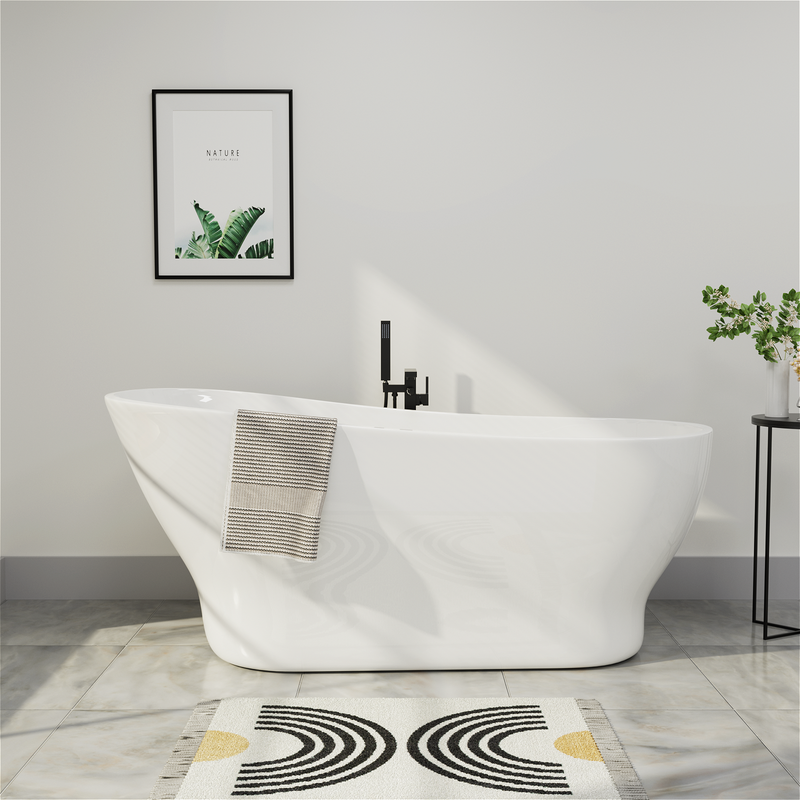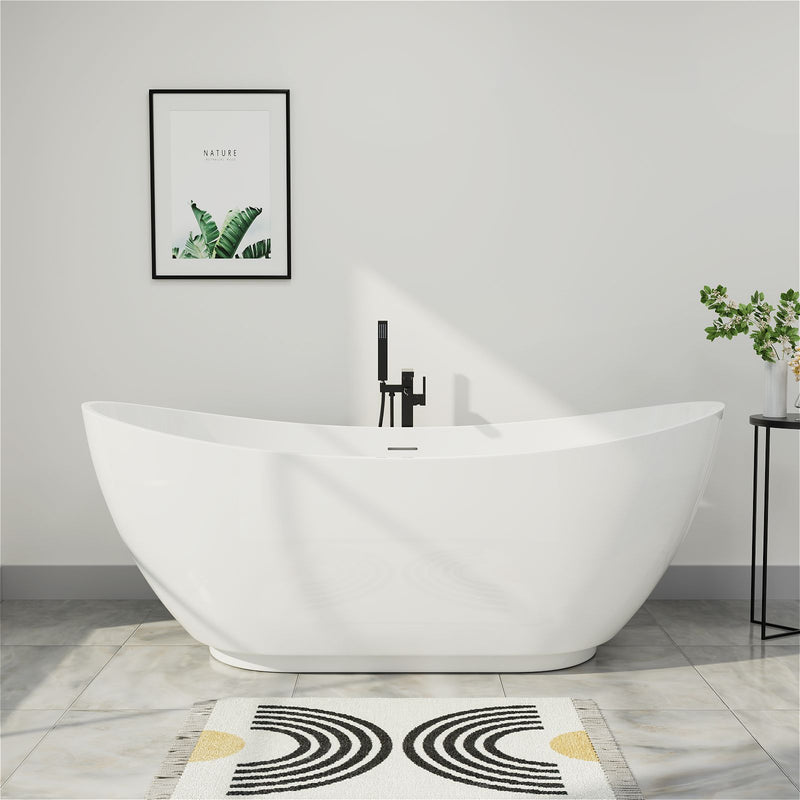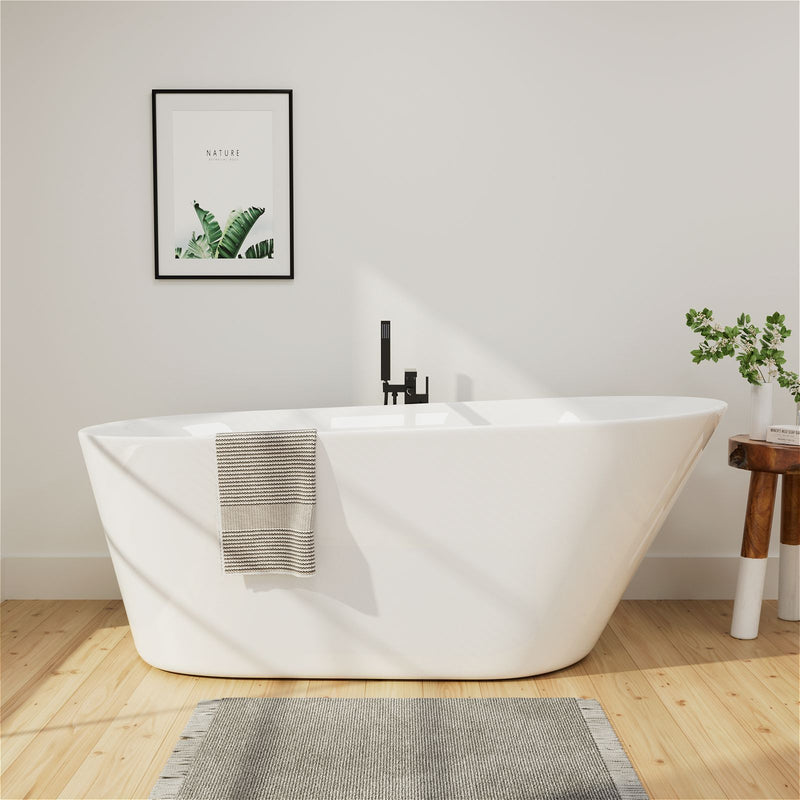An acrylic bathtub is a beautiful and luxurious addition to any bathroom, known for its warm surface and glossy finish. However, over time, it can fall victim to various types of stains that diminish its appearance and make your bathroom look less inviting. From the dull film left by soap scum to the stubborn rings caused by hard water minerals and the pinkish hue of bacterial growth, these stains are not just cosmetic issues—they can also harbor bacteria and degrade the surface if left untreated. The good news is that with the right knowledge and techniques, you can effectively remove these stains without damaging the delicate acrylic surface. This comprehensive guide will walk you through identifying different stain types, using safe cleaning methods, and implementing preventive measures to keep your tub looking like new for years to come.
Understanding Different Types of Bathtub Stains
Before reaching for any cleaner, it's crucial to understand what type of stain you're dealing with. Using the wrong cleaning approach can sometimes make stains worse or damage the tub's surface. Soap scum is one of the most common issues, created when soap combines with minerals in water and body oils to form a sticky, grayish film that clings to the tub surface. This film attracts dirt and makes the tub look perpetually dirty, even immediately after cleaning.

Hard water stains appear as white, cloudy deposits or sometimes as rust-colored rings, particularly around the drain area. These are caused by minerals like calcium and magnesium that remain after water evaporates. The longer these deposits sit, the more difficult they become to remove, as they can actually bond with the acrylic surface. Another common issue is mold and mildew, which appear as black, pink, or orange spots in corners and along the waterline where moisture tends to linger. These biological stains not only look unpleasant but can create unhealthy conditions in your bathroom.
Essential Safety Precautions and Cleaning Tools
Your safety should always come first when dealing with cleaning products. Always ensure proper ventilation by opening windows or running an exhaust fan to avoid breathing in fumes from cleaning products. Wear rubber gloves to protect your hands from chemicals and to prevent transferring oils from your skin to the freshly cleaned surface. Never mix different cleaning chemicals, especially bleach and ammonia, as this can create dangerous toxic gases.
For cleaning an acrylic tub, you'll need soft supplies that won't scratch the surface. Microfiber cloths are ideal because they're highly absorbent and non-abrasive. A soft-bristled brush can help with stubborn areas without risking damage to the acrylic. For most cleaning solutions, you'll likely already have the necessary ingredients in your kitchen: white vinegar, baking soda, lemon juice, and possibly hydrogen peroxide. These natural cleaners are effective for many types of stains and are much safer for both you and your tub than harsh chemical alternatives.
Effective Cleaning Methods for Different Stains
For general maintenance and soap scum removal, create a paste using baking soda and water. Apply this paste to the damp surface and let it sit for 10-15 minutes before gently scrubbing with a soft cloth or sponge. The baking soda provides gentle abrasion that lifts the soap film without scratching the surface. For tougher soap scum, you can add a small amount of mild dish soap to the baking soda to create a more powerful cleaning paste that still remains safe for acrylic surfaces.
Hard water stains require a different approach because of their mineral composition. White vinegar is highly effective against these stains due to its acidic nature. Soak paper towels in undiluted white vinegar and place them directly on the stained areas, particularly around the drain and faucet where mineral buildup tends to be heaviest. Allow the vinegar-soaked towels to sit for at least 30 minutes—this gives the acid time to break down the mineral deposits. After removing the towels, use a soft-bristled brush to gently scrub the area, then rinse thoroughly with water.
For mold and mildew, hydrogen peroxide is an effective and safe solution. Spray 3% hydrogen peroxide directly onto the affected areas and let it sit for up to 30 minutes before scrubbing gently and rinsing. For particularly stubborn mildew stains, you can create a paste of baking soda and hydrogen peroxide, apply it to the stains, and let it sit for 20-30 minutes before scrubbing and rinsing. This combination provides both cleaning power and mild bleaching action without the harsh effects of chlorine bleach.
Dealing With Stubborn and Set-In Stains
Some stains may resist the standard cleaning methods and require additional attention. For rust stains, which often appear as orange or brownish discoloration near metal fixtures, lemon juice can be particularly effective due to its citric acid content. Cut a lemon in half, sprinkle some salt on the cut surface, and use it to scrub the stained area. The combination of acid from the lemon and mild abrasion from the salt can often lift rust stains without damaging the acrylic surface.

For stains that have been allowed to set for extended periods, you may need to use a plastic cleaner specifically designed for acrylic surfaces. These products contain very fine polishing compounds that can remove surface stains without damaging the material. Always test any new product on a small, inconspicuous area first to ensure it doesn't affect the finish. Apply the product according to the manufacturer's instructions, using a soft cloth and working in circular motions, then buff to a shine with a clean, dry cloth.
Preventive Measures to Minimize Future Staining
Prevention is always easier than treatment when it comes to bathtub stains. After each use, rinse the tub with cool water to wash away soap residue and minerals before they have a chance to dry and adhere to the surface. Once a week, perform a quick wipe-down with a mild cleaner to prevent buildup. This regular maintenance takes only minutes but can significantly reduce the need for deep cleaning sessions.
Consider using a water softener if you live in an area with particularly hard water, as this will reduce the mineral content that causes hard water stains. Be mindful of the products you use in your bath—some bath oils, colorful bath bombs, and hair dyes can leave stains that are difficult to remove. If you use these products, consider giving your tub an immediate cleaning afterward to prevent staining. Finally, ensure your bathroom is well-ventilated to reduce moisture that encourages mold and mildew growth, and fix any leaks promptly to prevent water from sitting in the tub unnecessarily.
FAQs
What is the safest cleaner for acrylic tubs?
Mild, non-abrasive cleaners are safest for acrylic surfaces. Solutions made from baking soda and water or white vinegar are highly effective for most stains without risking damage to the finish. Avoid abrasive cleaners, scouring powders, and anything containing bleach or ammonia unless specifically recommended by the tub manufacturer.
Can I use magic erasers on my acrylic tub?
While magic erasers can be effective for some stains, they are mildly abrasive and can potentially create micro-scratches on the acrylic surface over time. These tiny scratches can make the tub more susceptible to future staining. It's better to use them sparingly and only for particularly stubborn spots rather than for regular cleaning.
How often should I deep clean my acrylic tub?
For most households, a thorough deep cleaning every 4-6 weeks is sufficient to maintain the tub's appearance and prevent significant staining. If you have hard water or use the tub frequently, you may need to clean it more often, perhaps every 2-3 weeks.
Why does my tub look cloudy after cleaning?
Cloudiness after cleaning usually indicates one of three issues: residue from the cleaning product itself (if not rinsed thoroughly), micro-scratches on the surface that scatter light, or mineral deposits that weren't completely removed. Ensure you're rinsing thoroughly after cleaning and using non-abrasive tools to prevent surface damage.
Are commercial tub cleaning products safe for acrylic?
Some are specifically formulated for acrylic surfaces, but many contain harsh chemicals that can damage the finish over time. Always check the label for acrylic compatibility, and when in doubt, test the product on a small, inconspicuous area first. Natural alternatives are often equally effective and much safer.
How can I prevent pink bacterial growth in my tub?
The pinkish film is caused by airborne bacteria that thrive in moist environments. The best prevention is to keep the tub as dry as possible between uses by wiping it down with a squeegee or towel and ensuring good ventilation in your bathroom. Regular cleaning with vinegar or hydrogen peroxide can also help control bacterial growth.
What should I do if nothing removes a stubborn stain?
For stains that resist all DIY methods, it may be time to consult a professional. There are tub refinishing specialists who can often remove severe stains and restore the surface without needing to replace the entire tub. Attempting increasingly aggressive methods on your own may risk damaging the acrylic beyond repair.
Conclusion
Keeping your acrylic bathtub free from stains requires regular attention and the right techniques, but it doesn't need to be a difficult chore. By understanding what causes different types of stains and using the appropriate cleaning methods for each, you can maintain your tub's beautiful appearance for years to come. Remember that gentle, consistent care is always more effective than occasional aggressive cleaning that might damage the surface. With the preventive measures outlined in this guide, you can significantly reduce the frequency of deep cleaning needed. Your efforts will be rewarded with a sparkling clean bathtub that enhances your bathroom's appearance and provides a pleasant, hygienic space for relaxation.





